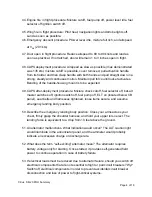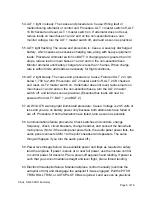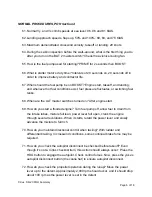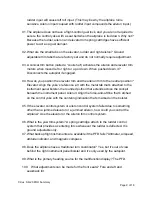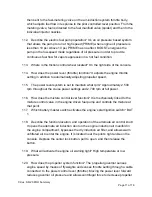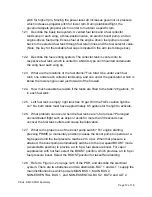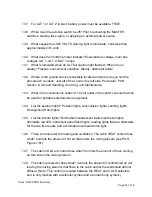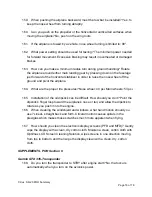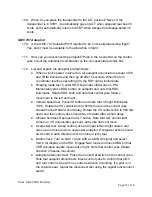
54.ALT 1 light in steady. The cause and procedure is: Cause: Wiring fault or
malfunctioning alternator or control unit. Procedure: ALT 1 master switch off, ALT
1CB checked and reset, ALT 1 master switch on. If alternator does not reset,
reduce loads on main buses 1 and 2 and on the non-essential buses, and
monitor voltage, turn the ALT 1 master switch off, and land as soon as practical.
55.ALT1 light flashing. The cause and procedure is: Cause: A severely discharged
battery, which causes an excessive charging rate, along with heavy equipment
loads. Procedure: Ammeter switch on BATT. If charging rate is greater than 30
amps, reduce load on main busses 1 and 2 and on the non-essential bses.
Monitor ammeter until battery charge rate is less than 15 amps. When charge
rate is within limits, add loads as necessary for flight conditions.
56.ALT 2 light steady. The cause and procedure is: Cause: Failure of ALT 2 or rpm
below 1,700 to 2,200. Procedure: ALT 2 master switch off, ALT 2 CB checked
and reset, ALT 2 master switch on. If alternator does not reset, reduce loads on
main buses 1 and 2 and on the non-essential buses, turn the ALT 2 master
switch off, and land as soon as practical. (Essential bus loads will now be
powered from ALT 1, BAT 1, and BAT 2.)
57.LOW VOLTS warning light illuminated procedure: Cause: Voltage is 24.5 volts or
less and you are on battery power only because both alternators have failed or
are off. Procedure: If both alternators have failed, land as soon as possible.
58.Communications failure procedure: Check switches and controls, change
frequency, check, circuit breakers, change headset, and connect the hand-held
microphone. (Note: if the audio panel power fails, the audio panel power fails, the
audio panel connects COM 1 to the pilot’s headset and speakers. The same
thing will happen if you turn the audio panel off.)
59.Power level linkage failure: Use available power and flaps as required to safely
land the airplane. If power is stuck at or near full power, use the mixture control
to control power for descent. Plan a power-off approach and landing. If power is
such that you cannot maintain straight and level flight, plan a forced landing.
60.Electric trim/autopilot failure: Maintain airplane control manually (override the
autopilot or trim) and disengage the autopilot if it was engaged. Pull the PITCH
TRIM, ROLL TRIM, or AUTOPILOT CB as required. Land as soon as practical.
Cirrus SR-20 POH Summary
Page 5 of 18




